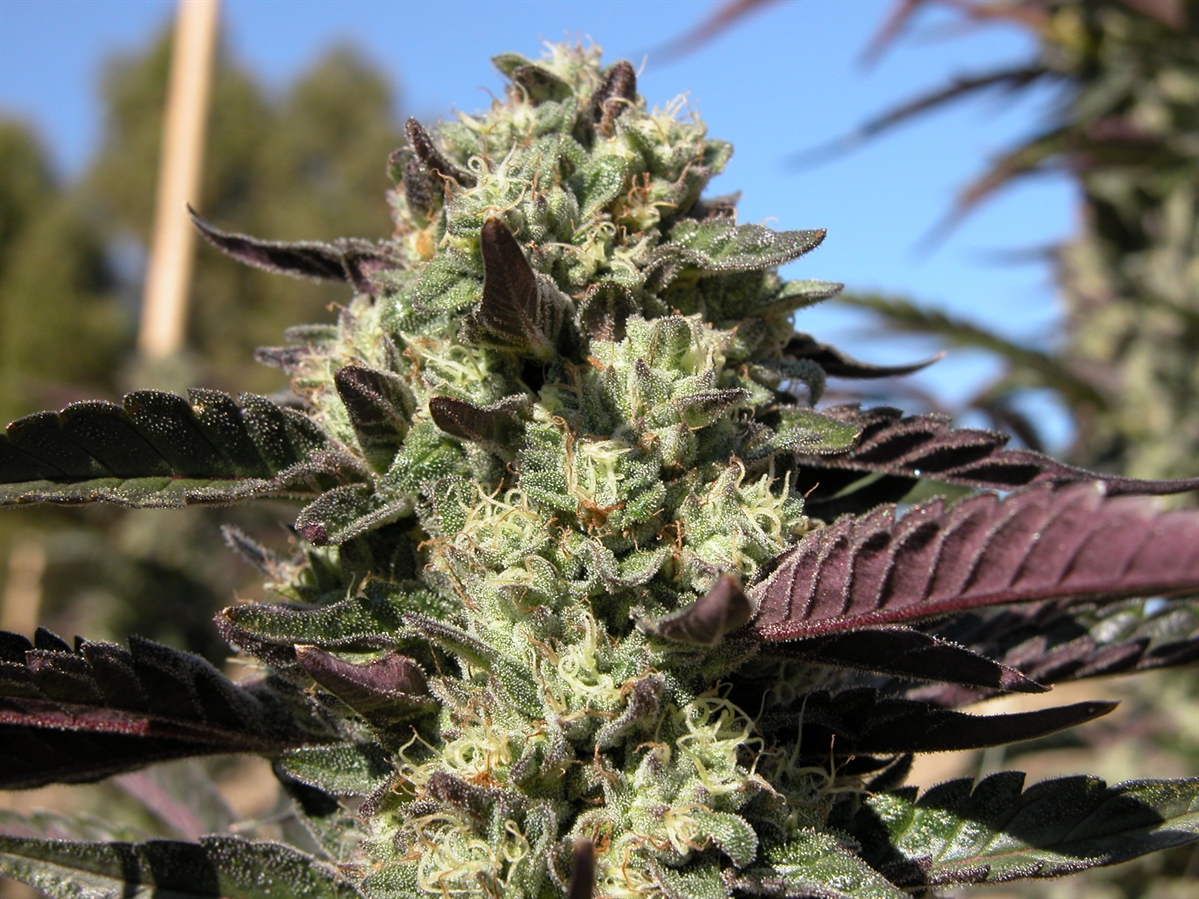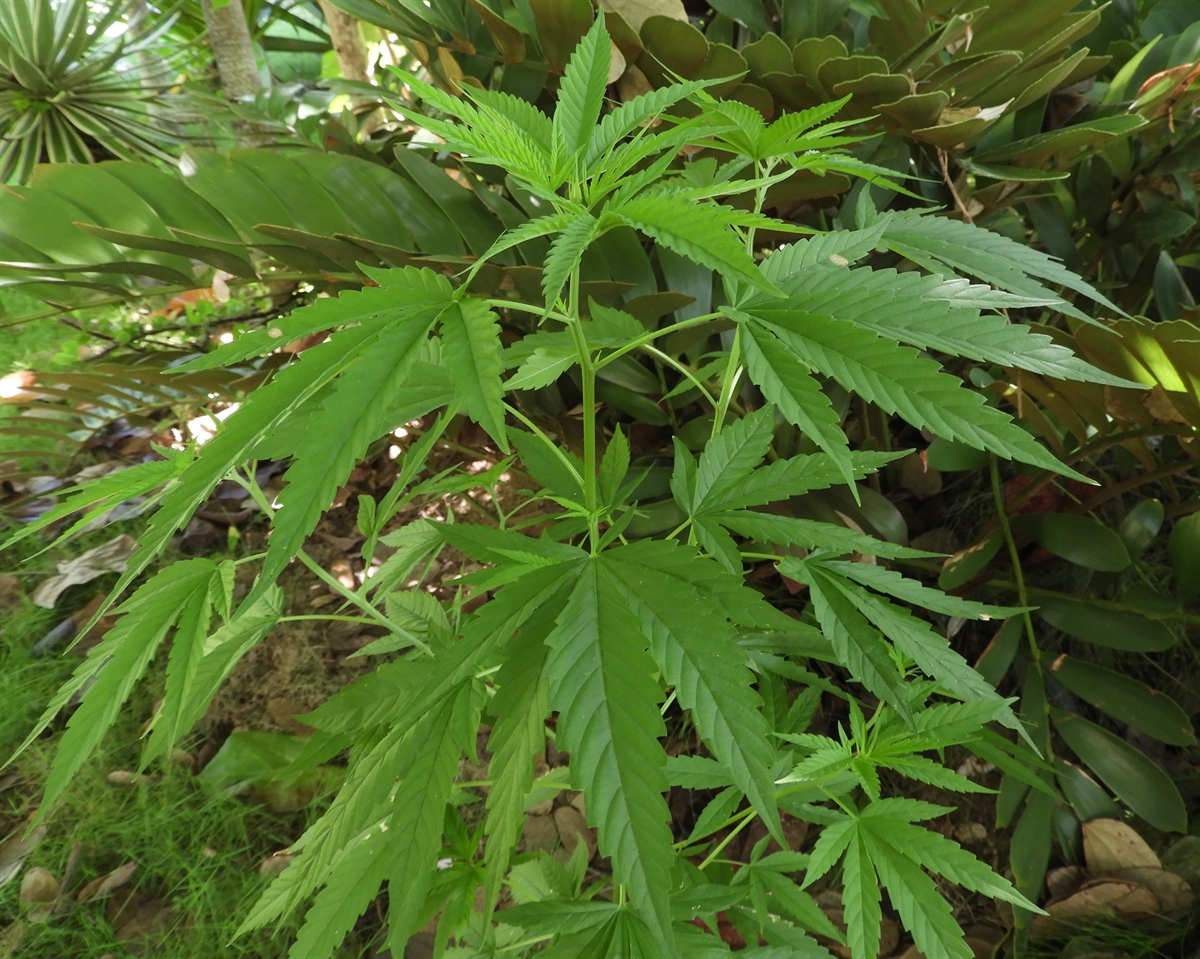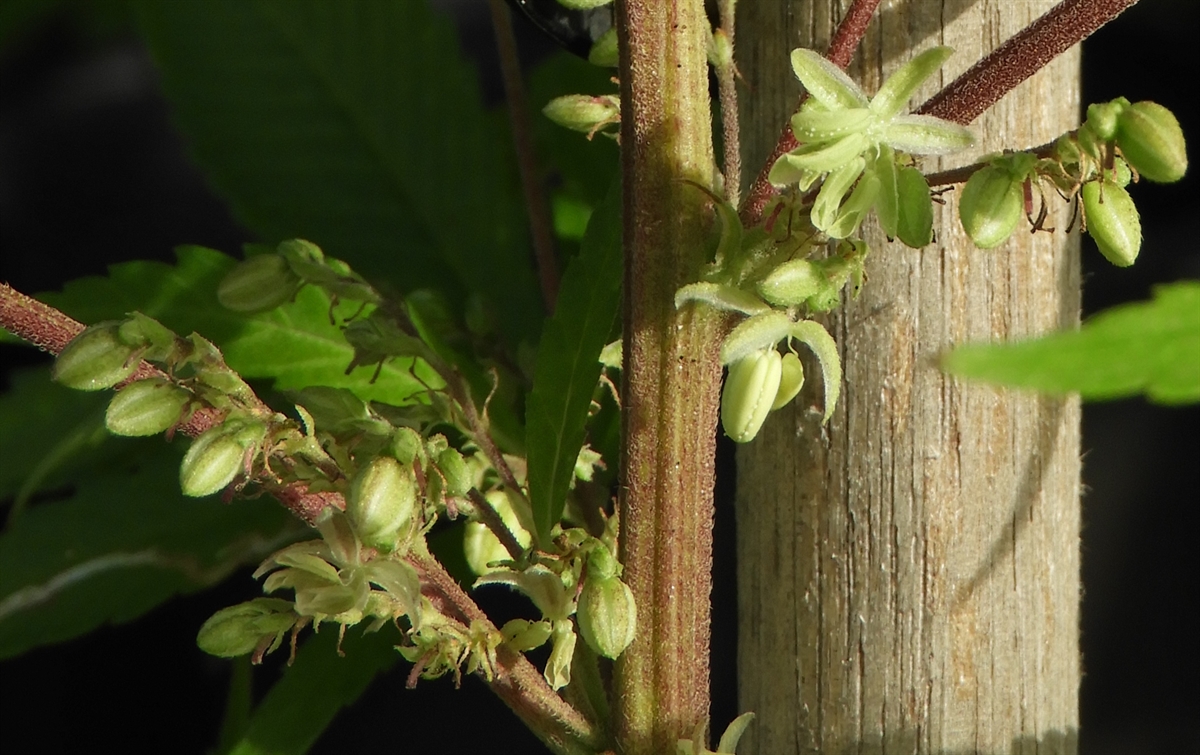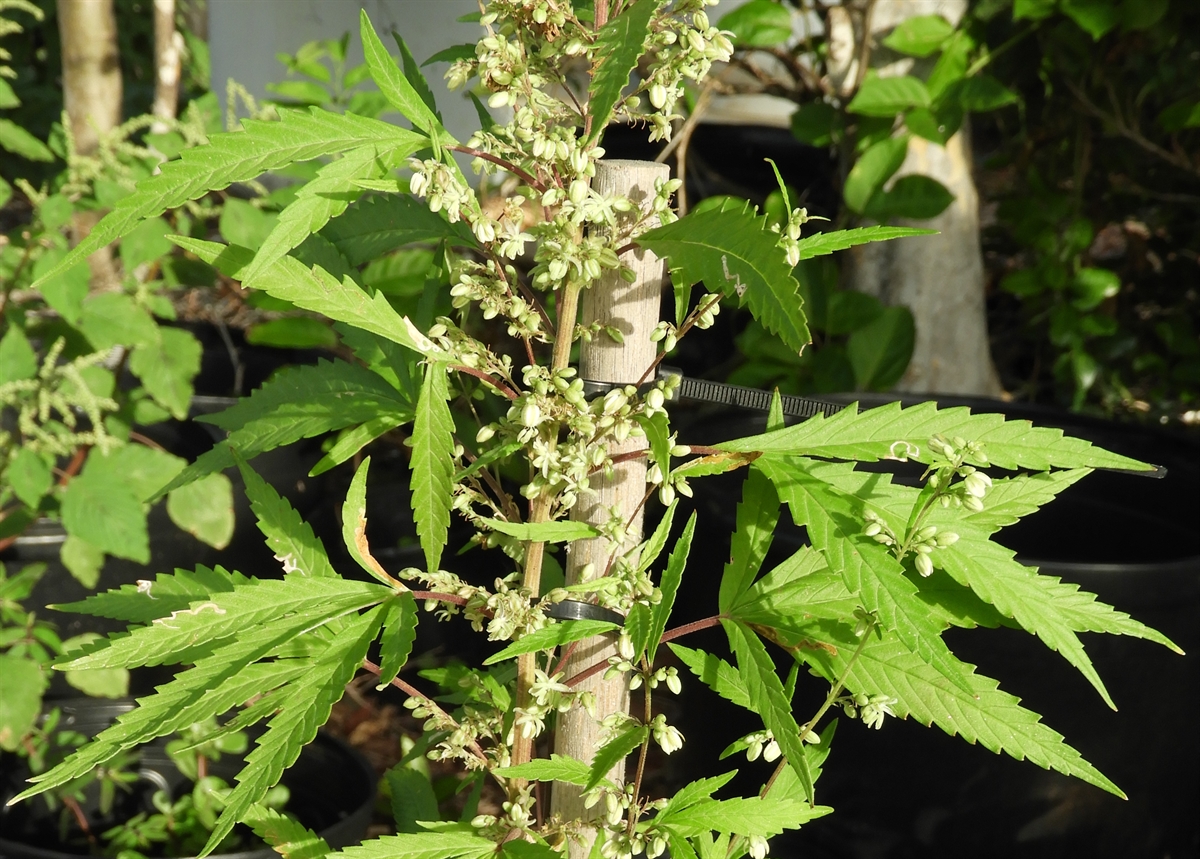Habit: Cannabis sativa grows as a pubescent glandular annual to 5 m in height. The palmately compound leaves are arranged alternately, each with 5 to 11 leaflets and subtended by linear stipules. The leaflets are lanceolate to 14 cm in length, with a serrate margin, an acuminate leaf apex.
Cannabis sativa is monoecious (mostly dioecious in cultivated varieties). The incomplete, imperfect, actinomorphic, flowers are arranged in terminal and axillary paniculate cymes. Staminate flowers have 5 unfused, green, ciliate, sepals in the calyx and no petals. There are 4 unfused stamens and no carpel. The carpellate flowers have 5 unfused, glandular sepals in the calyx and no corolla or stamens and are subtended by glandular bracts. The superior ovary has 2 locules. The fruit is an achene with a thin and papery coating with a single seed inside.
Habitat: Cannabis sativa grows in Human Altered environments (yards, gardens) and in remote areas.
Distribution: Cannabis sativa is NOT native to the Lucayan Archipelago but is grown on many of the islands. It is native to central Asia. It is now grown around the throughout world.
Medicinal/Cultural/Economic usage: Cannabis sativa has been used medicinally in the Lucayan Archipelago to treat nausea, increase appetite, pain, asthma, and eye issues. Active compounds within Cannabis sativa are known to be mild hallucinogens and cause a calming effect on users.
Cannabis sativa has been cultivated for thousands of years for its useful fibers, oil and protein filled seeds, and the intoxicating effects of its compounds.
Cannabis sativa is currently ILLEGAL to possess or grow in the Lucayan Archipelago but is considered a sacred herb within the Rastafarian community and is used extensively throughout all of the islands.



